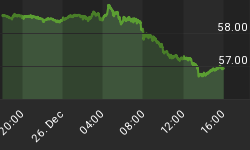Another FOMC statement and another swing at the law of probability. Some banks are considering the probability of a September Fed hike to be as high as 70%. Others prefer to hedge themselves with more appropriate qualitative means of referring to September as a "high probability outcome as long as....", citing the two upcoming jobs report and their average hourly earnings components. But even if the next two jobs reports are accompanied by robust hourly earnings, the inflation objective remains in doubt. We've long mentioned in previous pieces how the 20% decline in oil since early May will further retard any recovery in price growth, which has prompted the Fed to drop its phrase in the FOMC statement that "energy prices have stabilized" discussed here.

No Fed hike if oil stays below $50
We assert that it will be impossible for the Fed to raise rates this year if US crude oil remains below $48.00--even if the next non-farm payrolls come in between 200K and 300K. The October-March decline has already triggered a chain reaction of broadening cuts in capital and labour expenditure, which effectively cast a spell on the suppliers of these energy and mining companies. And barely when oil began its spring time recovery, the declines emerged anew.
Fed hawks will ignore inflation and focus on unemployment, payrolls and wages. They will add that the non-accelerating inflation rate of unemployment aka equilibrium level of unemployment is at 5.3%-5.5%, matching the current unemployment rate of 5.3%.
Fed doves will point to the fact that inflation has remained below its 2.0% target for the last three years, while the true NAIRU stands a lower 5.0%.
Market-based vs survey-based inflation
Dissecting market and survey-based measures of inflation will also become a popular sport in the months to come. The once popular but now questionable 5-year forward break-even inflation reference (5-year treasury yield minus US inflation-linked bond forward 5 years), appears to have bottomed at 2.08% last week, before gradually recovering to 2.2% today.
More importantly for the Fed, will be the crucial core PCE price index, due for release Monday, expected unchanged at 1.2% y/y. The August 19 release of US CPI as well as survey-based inflation components from the ISM, University of Michigan sentiment and regional PMIs will take centre stage.
Jackson Hole will be about inflation, not jobs
Holding oil and the US dollar constant (if we can realistically do that), the path for a Fed hike this year does make sense. But bringing back reality into the situation, including a disinflationary USD and recessionary oil/mining sector, the question should re-emerge at the Fed's August 27-29 annual Economic Policy Symposium at Jackson Hole, where unsurprisingly the topic of this year's conference will be "Inflation Dynamics and Monetary Policy", following last year's topic, which centered around labour markets. Fed chair Yellen will not be present at this year's conference, but the heated debated about the topic will not be absent, especially as it will take place 3 weeks days before the Sept FOMC and 7 days after the latest Greece deadline.
















